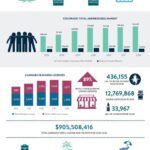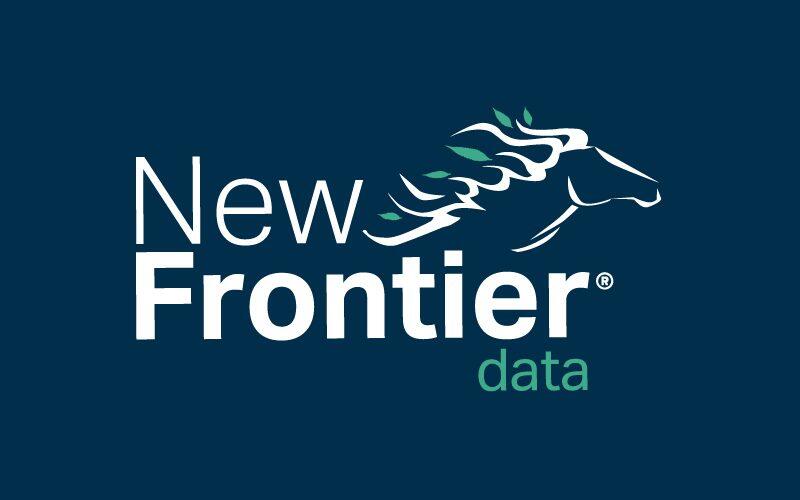Legal Cannabis at Five: Colorado’s Maturing Market Demonstrates Impacts & Opportunities

Colorado’s Adult-Use Sales Soar 2x Upward
August 11, 2019
What Have We Learned After Four Years of Legal Cannabis Sales in CO
August 18, 2019By John Kagia, Chief Knowledge Officer, New Frontier Data
As a new wave of states from Illinois to Missouri face their advent of newly legal cannabis, New Frontier Data’s analysis of Colorado’s first years of legal cannabis offers insights about the country’s most established adult-use market, as a guide for expectations as mores states adopt policy reforms.
When given a (good) choice, consumers will go legal. With over $6 billion in sales throughout its market’s first five years (2014-2018), consumers have flocked to Colorado, attracted by competitive prices, expansive options of regulated products, and widespread access in major population centers. Indeed, New Frontier Data estimates that over 80% of all cannabis demand in the state is now being served by the legal market. As such, further growth from consumers transitioning from the remaining unregulated/illicit market to the state-regulated industry will be incremental in the coming years. Its success in getting consumers to embrace its legal market is a hallmark achievement of Colorado’s efforts to disrupt the illicit market and affirms that consumers will opt for legitimacy when products are price-competitive and comparatively convenient.
The industry’s growth is in the adult-use market. Also notable about the numbers is how quickly adult-use sales eclipsed the medical market. By the end of their second year, Colorado’s adult-use sales had already climbed 40% higher than sales in its long-established medical market. The dramatic difference in the respective growth rates between the medical and adult-use markets underscores the value of medical licenses in those states still debating or formulating adult-use legalization. As seen in Colorado, the medical license holders who were operational when the state fully legalized were well-positioned to lead the adult-use market, with many having since leveraged themselves to become the largest operators in the market.
Legalization reflects a sweeping cultural change. The significant increase in self-reported cannabis use also tells of a sweeping cultural change underway in Colorado, where 1/5 of adults (19%) reported consuming in the past month (up 81% since 2012), while ¼ (26%) report consuming in the past year (a 65% increase since 2012). Several convergent factors drive the increases: Not only is Colorado among the demographically youngest states in the country, but it also has seen the third-highest influx of millennials (who consume cannabis at higher rates than do older adults).
Beyond the demographic shift, the end of prohibition in Colorado empowered consumers to be more public and open about their cannabis use. The normalization of cannabis, the erosion of its long-standing stigma, and its increasing social and cultural presence (often as an analog to alcohol), have translated to a large (and growing) number of adults being exposed to cannabis and opting more often to consume it. Likewise, with more confirmed science detailing the plant’s therapeutic uses, more consumers are integrating it into their lifestyle routines and wellness habits, resulting in higher reported rates of use and a consumer market now including more than 760,000 adults statewide.
Flower Still Dominates, but Alternative Products are the Future: Colorado has been a guiding market to understanding the evolving product landscape. Throughout its market’s first five years, retailers sold over 400,000 lbs. of flower, nearly 13 million edible units, and 34,000 lbs. of concentrates. While flower sales dominated at the market’s outset, there has been a dramatic shift from flower and combustion-based products to concentrates and other delivery mechanisms. The shift to vapes, popularized in Colorado, reshaped cannabis consumption trends nationally. Indeed, New Frontier Data’s cannabis consumer research has shown that sales’ shifting from flower is happening in all markets, though at a slightly slower pace in unregulated and immature markets. That development is important for adult-use retailers in newly legal markets, who will encounter consumers far more versed in vapes and other non-combustible products than were consumers in Colorado were at the launch of its market.
Cannabis has been an economic engine for the state. Colorado has seen 3,000 licensed cannabis businesses create nearly 39,000 jobs and raise over $1 billion in tax revenues. And while most demand has been generated by state residents, tourists have also participated significantly: New Frontier Data’s latest analysis shows that an estimated 3.4 million visitors have participated in Colorado’s market since legalization. Beyond its stimulative effect on local economies, Colorado’s canna-tourism has helped shape debates in other states and countries, as visitors return to their own markets with new perspectives on legal cannabis. While Colorado’s head start as a canna-tourism destination will be eclipsed by other markets (including California and Nevada), the long-anticipated start of social use spaces will ensure that the Centennial State remains a highly influential market in the culture and commerce of cannabis.
Public safety incidents have risen slightly amidst a steep decline in prohibition enforcement. Despite dramatic increases in the number of adults reporting regular cannabis use, any corresponding number of cannabis-related summonses for driving under the influence of drugs (DUID) have increased only by 5%, suggesting that the state’s public education campaigns and enforcement efforts have been effective in dissuading drivers from getting behind the wheel after consuming cannabis. In fact, since 2012, the number of cannabis-related arrests has fallen by half, reflecting the prioritization of cannabis education/awareness efforts since legalization.
While no state has achieved perfection in actualizing its legal cannabis programs, Colorado’s early experiences demonstrate show the explosive growth potential for a well-run regulated market. With more realized and sustained growth potential fueled by product innovations, expanding therapeutic and wellness uses, and the burgeoning new nationwide hemp market, the market’s evolution presents expansive new opportunities for growth, and key insights to the future of legal cannabis.




